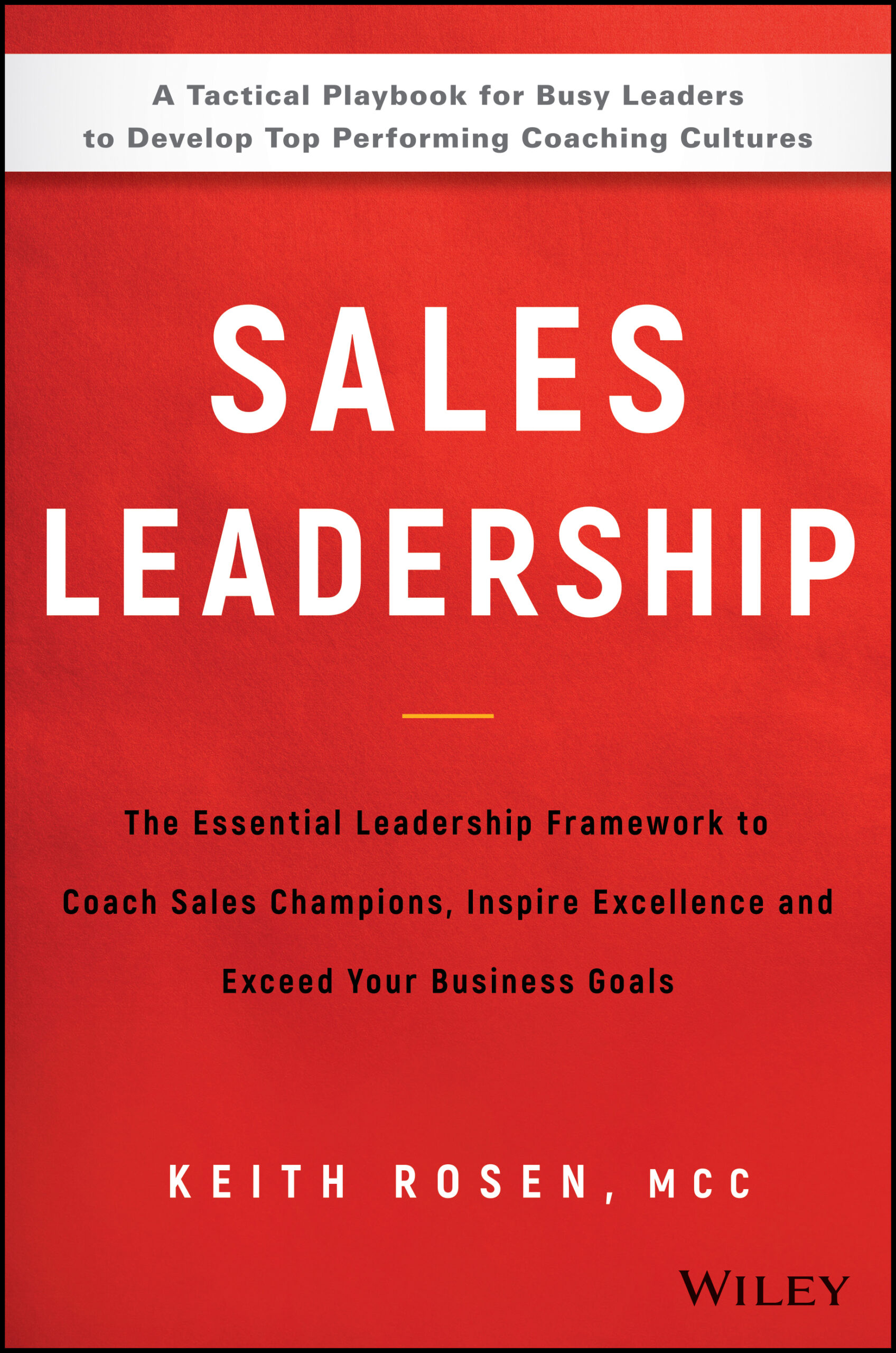Deciding who to hire, who to let go and when to do it is the daunting task that managers complain about most. Read more to learn how to avoid the seduction of potential.
 Two areas where managers consistently struggle are in the hiring and firing of their employees. When it comes to making the right decision about their employees, the questions I’m asked most are:
Two areas where managers consistently struggle are in the hiring and firing of their employees. When it comes to making the right decision about their employees, the questions I’m asked most are:
“I’m not getting the production I need from my team, even when I continually push them. How do you turn an underperformer into a top producer or at least into an average, acceptable producer?”
“When does it make sense to invest your time, money and resources into someone who you feel you can turn around?”
“How can I determine, based on a defined set of criteria, benchmarks and measurable steps, when to (with great certainty) cut the proverbial bait and let someone go?”
These are the most common questions, challenges and headaches amongst management and business owners that seem to keep them up at night.
Frustrating Superstars
Here’s a profound and valuable story that any business owner, manager or sales management team would want to hear about, especially as it relates to hiring, training and building a first class, high performance team. It happened during one of the best weeks I’ve had all year. This week happened to be the perfect balance of positive indulgence; extreme success in every area. I delivered some of the most well received keynotes/workshops in my career. I was even asked back to deliver an encore performance.
The subject matter of my seminars was cold calling, prospecting and leadership. That is, how to shift from being a manager to a coach so that you can turn an underperformer into a superstar in under 90 days.
It was during the management workshop I was delivering on the first day of this week long conference. Someone asked a question regarding how to handle an underperformer. As this manager was sharing in great detail the challenge she was having with a salesperson she hired several months ago, I noticed an interesting reaction from the audience. I glanced out at a sea of people, their heads nodding up and down in agreement; as if she was sharing not just her story, but everyone’s story.
She talked of an experience that practically every manager and business owner in the room was able to relate to; an all too common tale of a new, promising hire with incredible potential.
The story continued about the candidate with a wonderful resume, great background, stellar references and a seemingly positive attitude and disposition. A candidate who was given the opportunity to work with her, who she felt had the potential to live up to her expectations, and whose experience seemed to be a perfect complement to this new position she was looking to fill.
I listened intently to her as she described this experience. Her once positive level of exuberance, her hopes and dreams evaporated, as she painfully explained how this promising young superstar became one of her biggest disappointments. And it wasn’t like she just called it quits after a few weeks and fired this person. She invested her precious time trying to turn them around. The more she invested her time in supporting and training this person, the more her expectations were shattered.
This manager was stuck. She didn’t know what to do. At this point, this new hire was now costing her money, time, selling opportunities and resources every day this person stayed on her team. She completed her story, sounding as drained as if she and the rest of the audience were reliving their personal staffing nightmares all over again; touching what seemed to be an eternal wound that simply would not heal. What sounded more like a desperate cry for help, she concluded, “Keith, what should I do?”
The room was silent. Every manager and business owner in that room were gripping the edge of their seats, waiting, looking for and anticipating a magnificent solution to this common and painful dilemma. What was this magic formula that Keith Rosen was going to impart which would forever change the landscape of business by ending this ongoing problem and enable every manager to maximize the performance of their team and each player?
My response: “Do not be seduced by the ether of potential.”
Blank stares.
I knew I was on to something. I heard each person in the audience thinking.
The Ether of Potential
We are often seduced by the potential that we believe we see in others. We see potential in the people, as well as in the opportunities all around us. We see the untapped potential in the people we have a vested interest in. Our children, spouse, co-worker, partner, supervisor and of course in our staff. We see potential in new hires as well as the untapped potential in the veterans on your team.
We believe that sometimes, if we wait, if we’re patient, if we give them just a little more time, a few more resources, better training, they can finally live up to their potential. We believe our employee when they tell us, “Just give me a few more weeks. I’m about to close in on two big sales. Yes, I know my performance has slipped, but as I told you, those personal problems that have been distracting me are no longer there.” We get hung up on potential experiences and past defining moments.
We think, “Okay, if they really could turn it around that would make my life so much easier. After all, it sure beats the painful, and time consuming process of having to recruit someone new, let alone having to figure out how to cover a territory with no salesperson!”
This belief is counter intuitive. Ironically, it costs you more to keep someone like this on your team. More time, more lost sales, more lost opportunities, more internal problems and less time for you to focus on growing your business and on the people who are performing. The people who make you look great, who are coachable and who want to truly live their potential.
And that’s when it happens. The seduction begins. The ether of potential seeps into your veins. We start believing this can truly happen. Its seductive forces blind you to the facts. Now, you begin making decisions based on your emotions and unrealistic scenarios, rather than on the facts and what’s best for you, the company as well as the person in question.
The seduction of potential clouds your best judgment. If you’re looking for evidence, then just glance over at the people on your team today. Think about the people who you have hired in the past who did not work out. How many people can you think of who you hired, that, in your heart, you knew there was something telling you that they weren’t the right fit? Call it your gut reaction or intuition.
The Hard Cost of Complacency
How many times have you been in a situation with an underperforming employee where every week that goes by you tell yourself, “Just one more week. They’ll turn it around. I know they can do it. If they just follow the program. Just let them get through this next project. I hope they bring in some new business soon.” (A.K.A. Mother Teresa Syndrome. “I can save them. And I will sacrifice everything in order to do so!”) “Wait and see” is not a contingency plan. Hope is not a strategy.
We often hire people based on their potential rather than on what they have truly and measurably achieved. As such, we try to pull out, exploit and develop the potential we see in them. After all, the goal of management is to make your people more valuable. The key here is making sure you are investing your time in making the right people more valuable. Otherwise, it’s a time consuming and exhausting exercise in futility.
I too, fell victim to this philosophy in my younger years as a manager and business owner, thinking we can turn people around and actually ‘change’ people (without their consent.) As I mentioned, there’s a big difference between being a manager and being Mother Teresa.
Your internal dialogue then continues as you struggle to come up with the right decision, “If they stay, maybe they will turn it around! If I fire them, then what do I do? I have to start the recruiting and training process all over again. What if I fire them, they go to work for the competition and they become a superstar? Lets just wait and see what happens tomorrow.”
When it comes to creating extreme scenarios, relying on costly assumptions and making decisions that are being fueled by fear and consequence, the pendulum swings both ways. Unfortunately, you’re still in the dark either way.
You Can’t Build a Business On Potential
Let me bottom line this. There is no potential in the terms of how we define it or embrace it in our lives. The way we use potential is more of a smokescreen, a diversionary tactic, a justification for our behavior, for doing something we want to do or an excuse not to take certain actions.
You don’t hire someone based on their potential. Here’s a more vivid and beneficial definition of potential. Potential is based on something that you have not seen yet nor have evidence to support. Potential resides in the future, a possibility. Besides, if you are attempting to make a hiring decision based on someone’s potential, and the candidate hasn’t been living their potential by the time you have met them, then what makes you think they are going to start living it when you hire them?
Either people strive to live their potential each day or they’re not. It’s that simple. You may also want to check on the tools, resources, training and coaching that you have provided them.
Besides, if you don’t know whether or not you have made the right hiring decision within 30-60 days of hiring them, then you are in deep trouble. Thinking that if you give them one more change, more time more training is the answer, it is not. This is a lie that you’re telling yourself, a justification. What will happen is this; eventually the pain of keeping that person around will become so evident that they either quit or get fired. Now, the manager has surrendered all of their power to act by choice and instead, is in a state of reaction and need.
If you or your staff are not currently using what you have every day each day, then you are not living your potential. It’s not that you cannot improve. The difference between lifelong improvement and building a high performance collaborative team of self motivated people and working off potential is this. With potential, you’re seeing something that you have not seen yet nor have evidence for. With lifelong improvement, you’re working with something you see with evidence that it can be made better.
Collapsing Potential with Possibility
What’s missing for managers is certainty. It’s the uncertainty, the unknown, the fear that paralyzes every manager when having to make a decision whether or not to terminate someone or invest the time in turning them around. Managers rely more on their gut than on the facts.
Having the certainty and confidence in their people supported by evidence is a healthier more productive model when creating new possibilities based on authentic, human potential. The certainty comes from having an executive sales coaching program. Once you have a structured, coaching program that holds someone accountable on a daily and weekly basis, you no longer have to make the decision to keep them or terminate them. Now, your underperformer in question will make that decision for you, based on the defined set of criteria and measurable actions steps they need to take to demonstrate their commitment to their position and to dramatically improving their performance.
If you are responsible for hiring, developing and managing a team, what process do you have from the time you hire someone through their first 30, 60, 90 even 120 days in their new position? What would having a 90 Day program for every new hire based on measurable productivity steps do for you and for your team? Wouldn’t this simplify your life dramatically? Now that you have a proven process documented, either the new hire is sticking by the program, or they are not. Now, there’s no room for you to be seduced by the potential of possibility. There’s no ‘probation’ or waiting for the year end performance appraisals.
No more guesswork. No more ‘what if’s”. No more stressing over what you perceive you can’t control or being frustrated because your process doesn’t work. Remove the doubt and replace it with certainty, peace of mind and the confidence in knowing that the process will produce super-achievers.
Now you can run your business or your team with greater efficiency. Once in place, you’ll be able to get back to doing what you were meant to do in the first place; make your people more valuable.
Photo credit: Spookygonk



